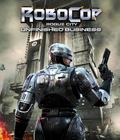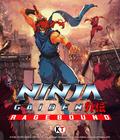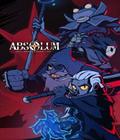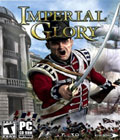Genre: Strategy
Publisher: Eidos
Developer: Pyro Studios
Release Date: May 17, 2005
Buy 'IMPERIAL GLORY': PC
When fascism was fun...
When the gaming community got a look at Pyro Studios' Imperial Glory, everyone took a collective gasp. Pyro has been known for its long-running Commandoes series, strategy/puzzle games about a colorful band of World War II commandoes that were basically an isometric pre-rendered timing puzzle with some wonderfully drawn sprites and dastardly designed levels. Imperial Glory is something completely different. Both a strategy and tactical wargame, Imperial Glory can be best compared to Rome: Total War. Pyro makes a valiant effort to create a synergy of strategic thinking and tactical employment in what amounts to a solid game that could prove to be the first in a long line of well-refined strategy games.
Imperial Glory covers a very specific timeframe in history that very much shaped the modern world. 1790-1825 is an era commonly referred to as the Napoleonic Era, but this is largely a misnomer, as a great deal was going on during this time. Western Europe was embroiled in a long-standing war between various alliances and the French Empire. What makes this era so fascinating to study is that it is the only time where the primary armament for the average infantryman was either a musket or a rifle, and yet cavalry armed with lances and sabers still found a critically valuable role in battle.
Less than 40 years later, this mixture of infantry and horse-mounted cavalry would be found antiquated in the American Civil War and furthermore in World War I (there was an ill-fated cavalry charge by the Polish Army during World War II, but this event is largely misunderstood and misconstrued as the horse was primarily a means of transportation and not the weapons platform it had once been).
Aside from the massive land engagements between the opposing similarly equipped armies, fleets of wooden battleships fought likewise massive engagements at sea, where cannon were used to great effect. This stretch of 30 years saw the collision of the old and the new, where infantrymen functioned not only as moving batteries that fired volley after volley, but soldiers also worked as pikemen upon fixing a three-foot bayonet at the end of a five-foot firearm. Perhaps this all sounds boring to you, but at no other time can you find a methodology of warfare as you did in the days of Napoleon, Wellington and Tsar Alexander. Okay, enough of the history lesson.
Imperial Glory is comprised of two parts, and both parts can be subdivided into two more aspects. The first part of Imperial Glory is perhaps the less exciting but in many ways more compelling aspect of Imperial Glory, and that is the strategy map. The map is where you will make decisions on where to move next, what to build, and what to research first. The map is also where you will think out your grand strategic moves and learn caution.
The most often view used for the strategic map is the military view, where you will be able to see all of your commanders with their attached units, installations, naval units and ports. In this mode, you can build and order the conscription of more soldiers of varying quality, based on your level of scientific research and available facilities. You can begin with either the lowly melee-armed militia or line soldier, but you can work yourself up to the dauntless Blackguard or Imperial Guard.
Of the five empires you can play (England, France, Austria, Prussia and Russia) each has their own versions of these different unit types, but they are statistically identical. The purchase price and maintenance cost differs across the empires, and some empires do not get militia (England and Prussia) while others are forced to pay more for better quality troops (Austria and Russia). Nominally, light infantry is the same across the board, as is a lancer, as is a 12-pound gun. The only means of improving your units is the creation of training grounds and firing ranges.
The commercial view is not used as widely as the military view, but it is vital to your empire's success. The commercial view reveals trade routes, and from the outset, trade is the means to grow your empire. If you do not establish strong economic corridors throughout your empire, then you will quickly fall behind and be swallowed up. While I am not sure as to how realistic this reliance on foreign trade is in terms of the game's historical focus, it makes for compelling gameplay and forces you to think strategically.
For instance, France is ultimately going to be one of the main foci for England's conquest, but France is also an inordinately wealthy nation with which to trade. Go to war with France, and that trade revenue is lost and that revenue will be crucial for the upkeep of your armies. France wouldn't be so important if you could establish trade routes with Russia and the Ottoman Empire, but you have to find them and establish diplomatic relations with them first. It's much easier said than done.
While most of your crucial decisions will be carried out on the strategic map, the most satisfying moments of this game happen in the fields. The tactical components of this strategy game happen in two flavors: on land and at sea. Both means of battle are fun but have their flaws. Land battles can consist of up to 18 different units which are supposed to be regiment/battalion formations. You can mix up a variety of infantry, cavalry and artillery units, depending on how much research and infrastructure you have built up. Your ability to field more advanced formations will directly depend on your ability to feed and pay your troops. However, your troops must also be drawn from your available population centers, and if you are Russia, then you have it easy, but if you are Prussia, then things are tight.
Tactical gameplay resembles that of Rome: Total War, where you can march your units in various formations across a three-dimensional map. The maps are varied and nicely textured with some interesting landscapes and geographic features. Selecting, grouping and maneuvering your troops is easy enough and you can leave your units on an automatic "engagement" mode, where they will fire and charge or counter-charge, depending on the context. This works nicely to reduce the amount of micromanagement.
The land battles do suffer from some rough edges. If you are attacking a province, take the province and its key terrain and are then counter-attacked, you will find yourself starting off the second battle in the same deployment zone as the first. For example, I took Izhora (St. Petersburg) and captured the fort, and the next turn, I was attacked by another Russian army. In this second battle and subsequent battles, my forces were deployed outside the fort I had just taken, as if I were attacking the province all over again.
The in-game camera allows you to zoom in and pan, but the camera is locked at a parallel line to the terrain, which makes for some awkward camera angles. Pathfinding is embarrassing. No matter how horrendous your casualties, your soldiers will stay and fight to the death, which is nice but totally inaccurate. Even the most hardened soldiers of the era would fold and run when their unit took moderate casualties.
All of these flaws lead to a less than fulfilling experience. I did not find myself engrossed in the battles, as they played out more like an arcade RTS affair, where the determining factor was more or less how many men I could throw into the meat grinder rather than maneuver and fire tactics. It would have been nice if the scale of my units and the landscape jived with the ranges of each unit. To my mind, it seemed as if these soldiers could fire with ferocious accuracy at very long ranges, while the cannons seemed to be woefully short-ranged.
I would have liked to see Pyro make more effective use of smoke. The smoky discharge from the black powder being used at the time created veritable fog banks into which no one could see and was the real origin of the cliché "fog of war." How devastating would it be to march your army across the field in perfect harmony only to realize that in the roiling smoke, your foe had marched his troops into a nicely aligned enfilading position? As it stands now, such tactical nuances are lost on Imperial Glory. Perhaps I sound harsh, but what we do have here is a very sound starting position to build off of.
The sound and graphics are solid, and the engine renders an impressive amount of animated three-dimensional units. The textures and landscape look nice, and the architecture of dense urban sprawl prove to be interesting battlegrounds.
Naval battles are decidedly different. No matter where your navies engage, you will always be fighting in the same ocean tile-set of textures. It would have been nice if coastlines could have come into play as well as shoals or shallows, but as it is, the only factor to be taken into account is the wind. Each ship has a variety of munitions to fire, which will specifically kill crew, damage sails or damage the ship's hull. I found this rocks-paper-scissors approach to be a little contrived, as the computer primarily sticks to cannon shots, whereas you can decide to go for a certain strategy such as to immobilize your foe and then board him.
The ammo types are real; Lord Nelson could order his batteries to load chain shot or grapeshot, but these ammo types weren't used very often, and their ballistic performances were wildly different, as chain shot and grapeshot could only be successfully employed at very close ranges. Imperial Glory treats each ammo type as the same in terms of range, spread and reloading time. Furthermore, grapeshot only affects the crew and does not affect the ship's sails, while chain shot only affects the sails and cannon only affects the hull. Wouldn't it make more sense that each shot would still damage all three aspects of a ship but to different degrees, depending on the shot selection? Even so, the naval battles are fun to play out, but they are exceedingly difficult to manage when there are more than three ships to control and there is no means of controlling speed other than how much wind you're picking up.
At its core, Imperial Glory is a good game that successfully mixes strategy and tactics with a good dose of authenticity. This game is by no means an exercise in history, as the designers have clearly chosen simplicity as a means of streamlining gameplay and leveling the accessibility ramp for novice gamers. That isn't a bad thing. If there is one thing a wargame can suffer from more so than simplicity, is an over-complicated gameplay design stifled with drab graphics and dull sound effects.
If anything, Imperial Glory does look exciting and does permit a good degree of strategizing. Seasoned tacticians might be disappointed, but if there is someone out there looking for a good look at the Napoleonic Era of warfare, then Imperial Glory can provide a fun and easy window to look through. I hope that Pyro considers updating this game with an expansion pack or even a sequel. The issues I've taken with the game are certainly not deal breakers and can be easily fixed or massaged with some more refinement and design.
Score: 8.0/10
More articles about Imperial Glory











 Imperial Glory promises to be the most extensive strategy game ever, offering an in-depth management model along with graphically stunning real-time land and naval battles in full 3D. Choose which of the five great 19th century Empires to lead: Great Britain, France, Russia, Prussia or Austro-Hungary, each with their own unique attributes.
Command your troops in large-scale battles across the globe, from the green fields of England to the icy wastes of Russia and sweeping deserts of Morocco. However, ultimate glory will depend on your utilising politics, trade, diplomacy, resource management and technology research. This is an age of change - be at the leading edge of the modern world or your civilization will crumble and fall.
Imperial Glory promises to be the most extensive strategy game ever, offering an in-depth management model along with graphically stunning real-time land and naval battles in full 3D. Choose which of the five great 19th century Empires to lead: Great Britain, France, Russia, Prussia or Austro-Hungary, each with their own unique attributes.
Command your troops in large-scale battles across the globe, from the green fields of England to the icy wastes of Russia and sweeping deserts of Morocco. However, ultimate glory will depend on your utilising politics, trade, diplomacy, resource management and technology research. This is an age of change - be at the leading edge of the modern world or your civilization will crumble and fall.







































